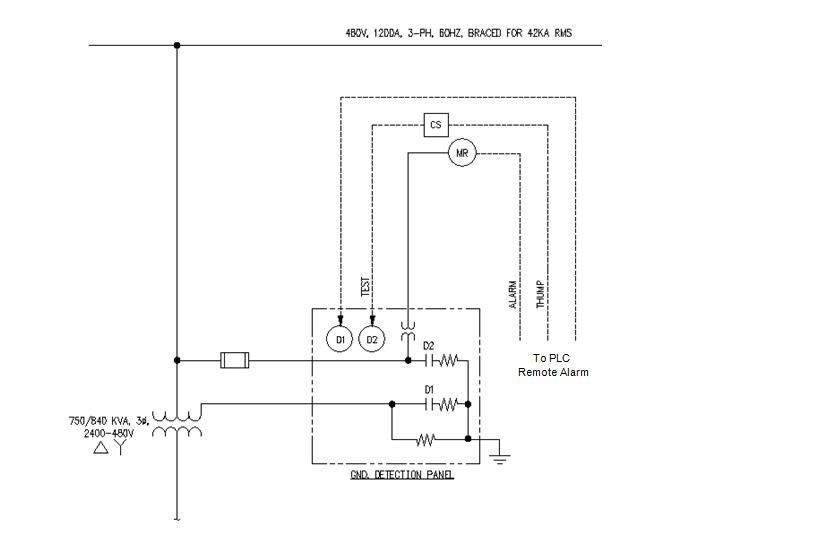Many high resistance ground systems have a fault locating function that varies the fault current in an on-off-on-off sequence that can be detected by a clamp-on ammeter. When turned on, the pulser, or thumper, cuts out part of the grounding resistor to increase the fault current from say 5 amps to 10 amps about 1 or 2 times a second.
The 5-10 amp ground fault current is going out on one of the phase wires and returning through the grounding/bonding system. An ammeter clamped around all three phase conductors on the faulted circuit will indicate the pulsing current. Most of the time you can detect the pulsing current by clamping on the outgoing conduit and follow the circuit to the fault location.
This fault locating without turning off the loads is one advantage of high resistance grounding. Clamp on meters with large jaws to fit around large conduits and feeders are available from the Hi-Res grounding suppliers.
(I can't read your schematic, so I may have the wrong description. "Thumper" usually refers to a high voltage underground fault locating method that pulses a large voltage on the faulted circuit. The arcing at the fault location makes an audible thump that can be felt at the surface and detected with listening/locating equipment. It is considered a destructive test that stresses the rest of the circuit.)




